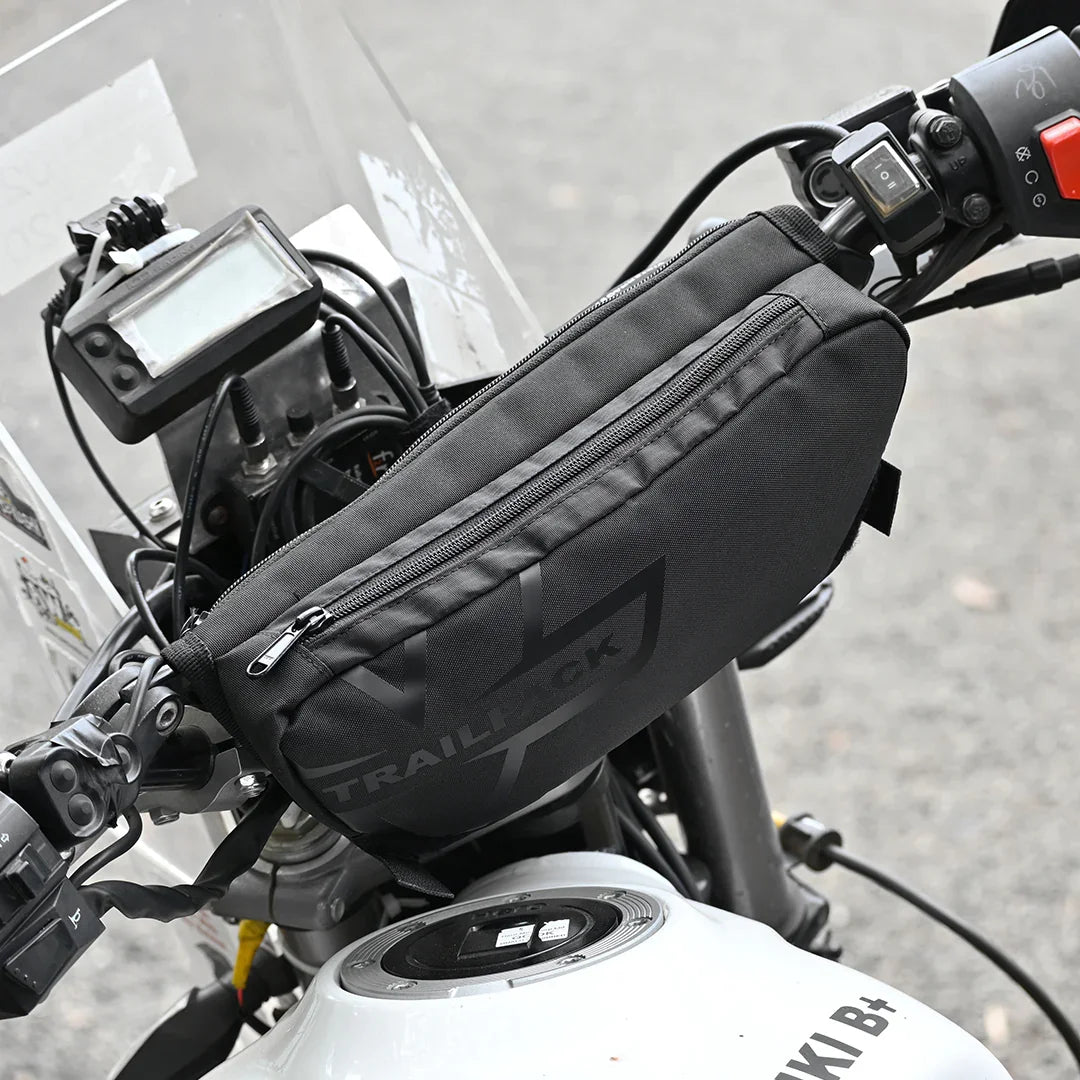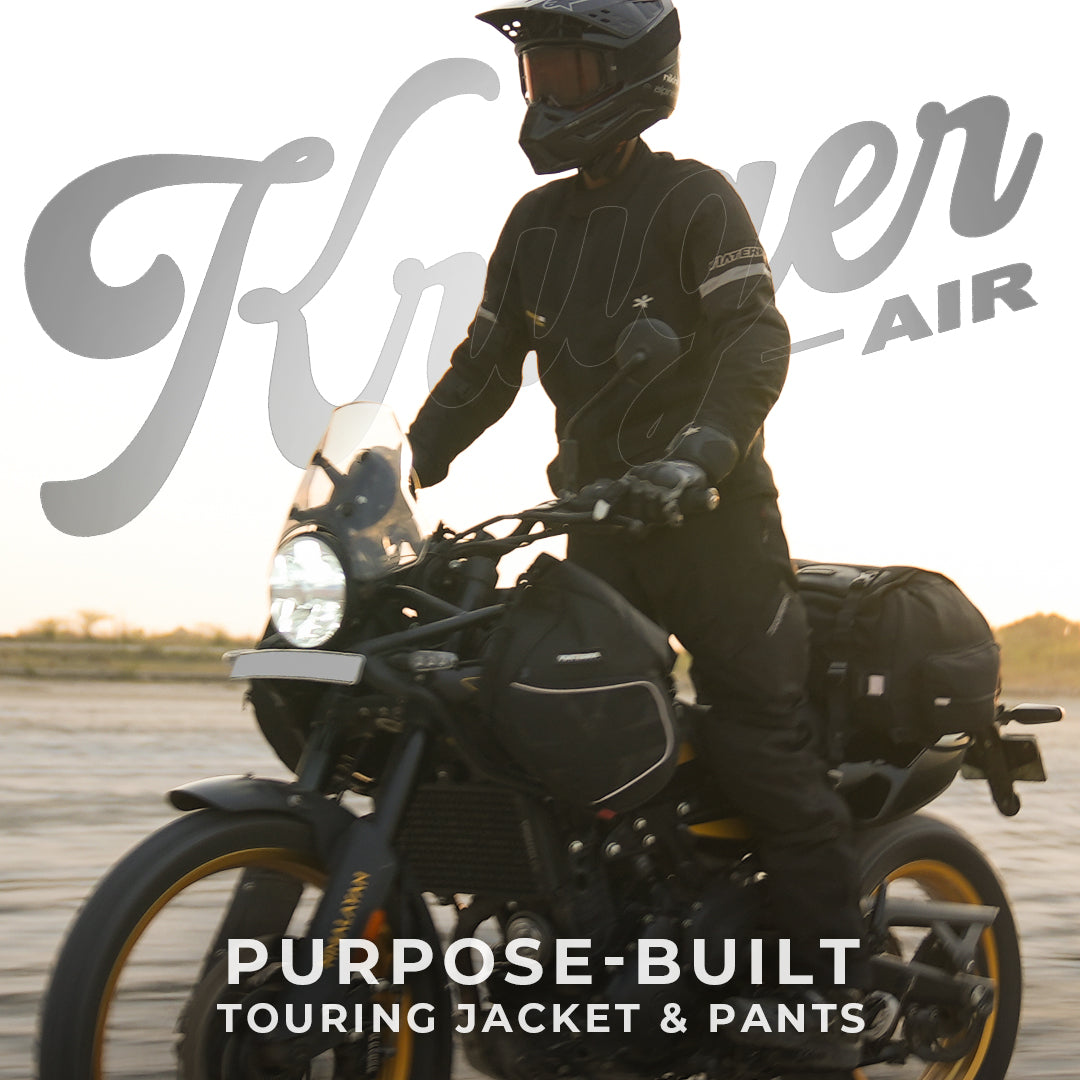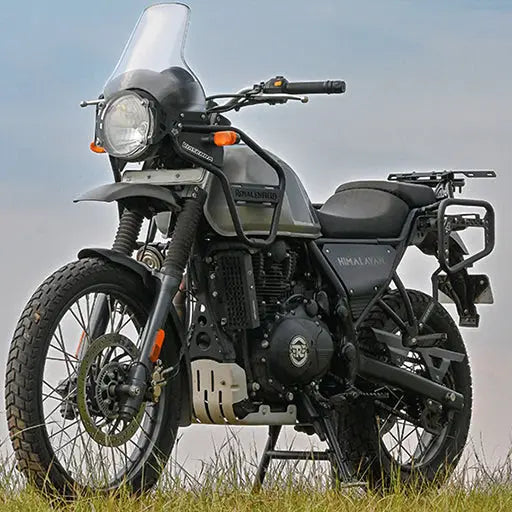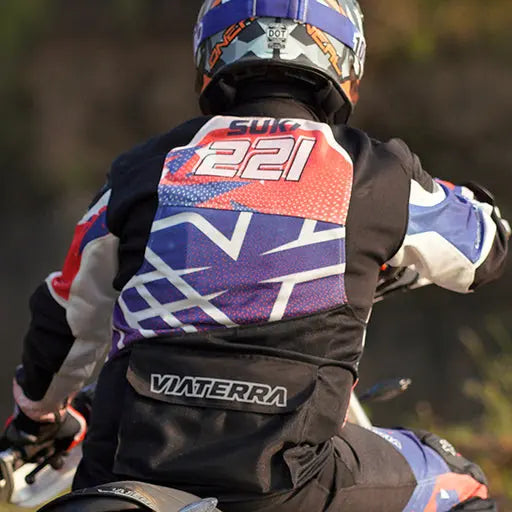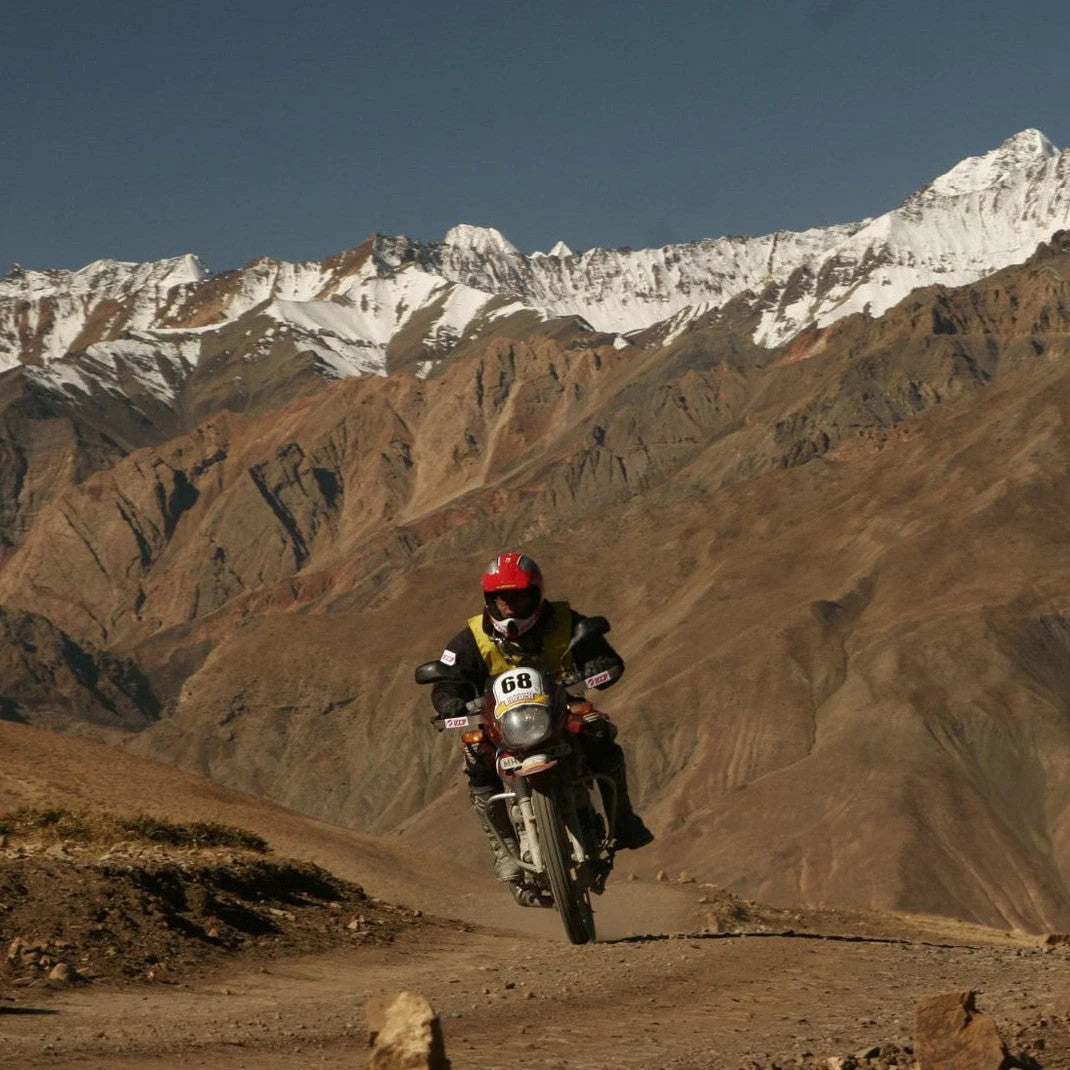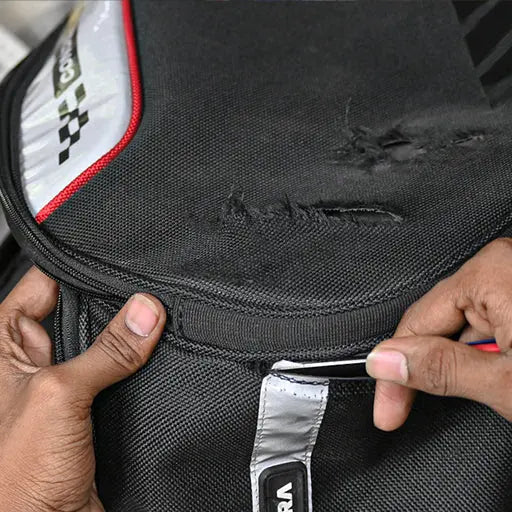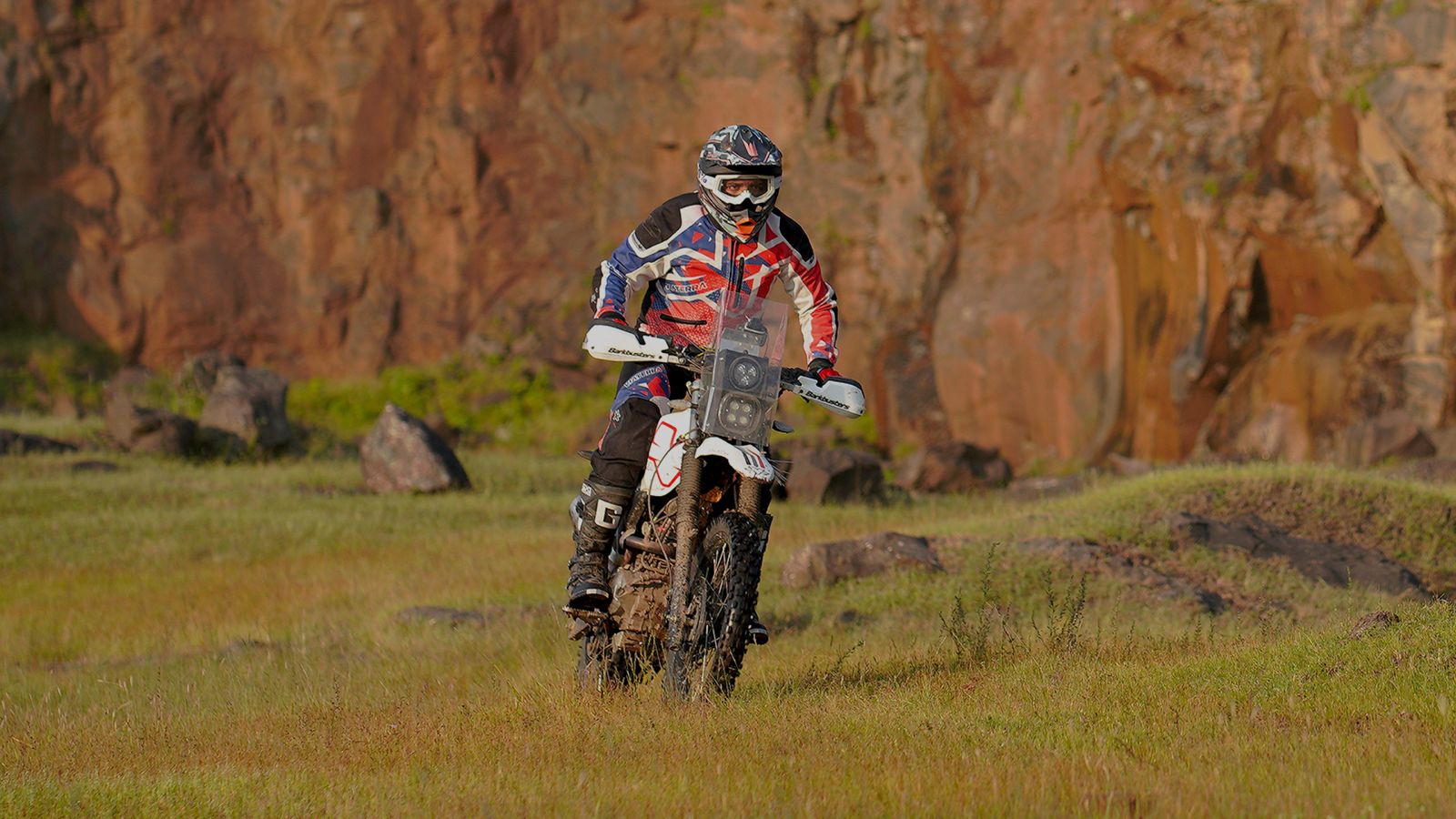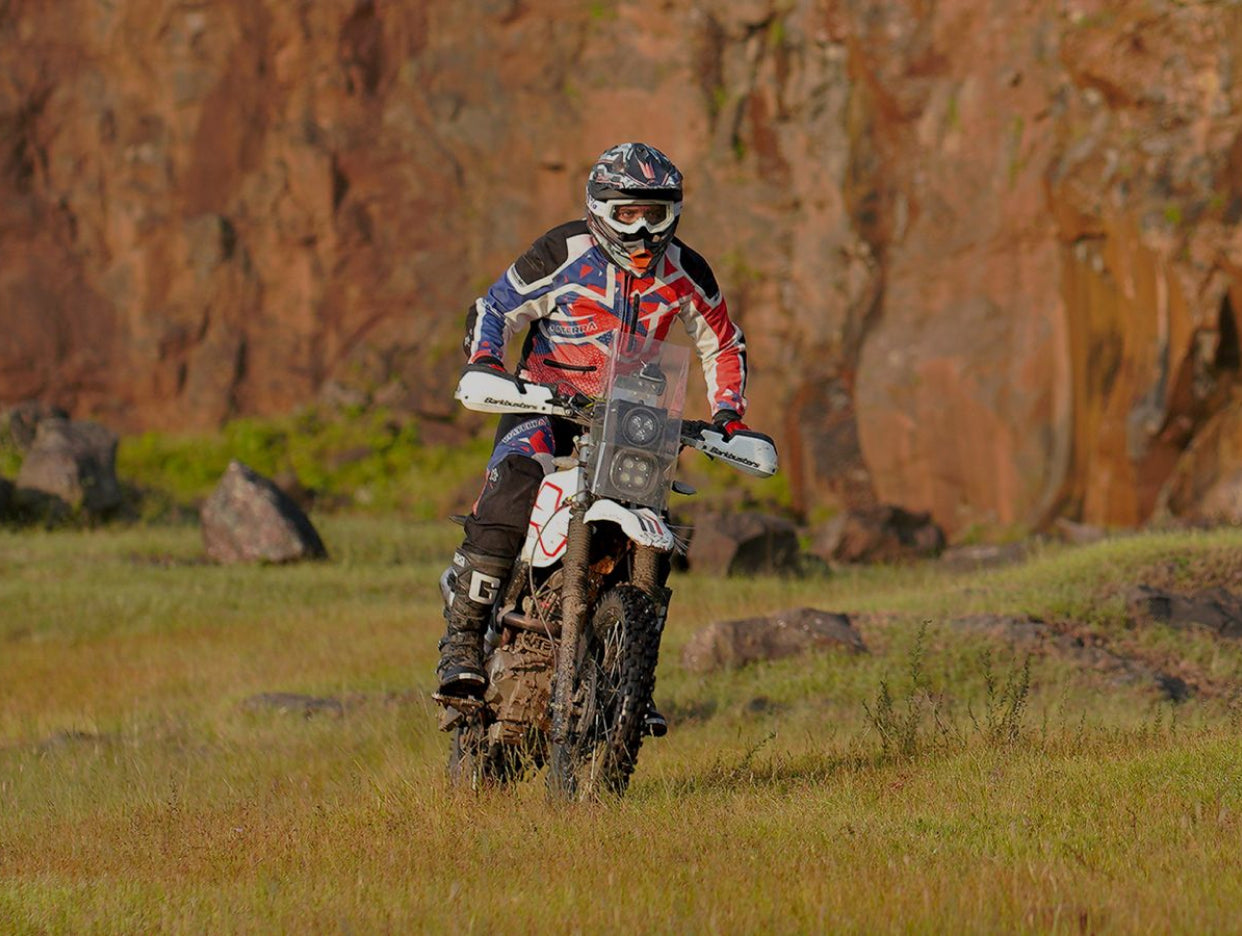Jargon is bad, no matter what industry or group you view from the outside. Yet jargons are constantly used, because it helps the ‘group’ speak easily to those who are in the ‘know’. Motorcycling also has a ton of jargons which sounds alien to non-riding folks. This includes motorcycle riding gear as well.
Coming across all those technical words and phrases, when all that you want to do is buy a good jacket can be intimidating and annoying! Which is why we put this guide together with all the common riding gear terms in one place for your ease…
Here’s a rundown of crucial gear terms to aid new riders in navigating the spectrum of protective equipment:
600D Polyester
A type of polyester fabric often used in motorcycle gear for its durability and abrasion resistance. Here the letter ‘D’ stands for Denier, which is a unit of measurement of the thickness and weight of the fabric. The higher the number, the thicker the fabric.
Due to the fabric’s tight weave, it is not breathable, which is why mesh panels are used to improve ventilation on riding gear. 600D Polyester is not waterproof, till the time it is treated with some waterproof coating, which is generally not the case for riding gear.
Armour
Integrated within jackets and pants, armour comprises inserts made of various materials. These are designed to absorb impacts and enhance protection in case of accidents. Armour is not placed across the length and breadth of the jacket, instead it is used only in high impact zones.
On your riding jacket, ideally there should be armour on the shoulders, elbows, back and chest. For riding pants, armour should be on the hips, knees and tail bone.
ATGATT
An acronym signifying "All The Gear, All The Time." This phrase emphasizes the importance of wearing complete protective gear every time a rider goes out on the road. It is used to drive home the point of never leaving home without your riding gear. Often new motorcyclists assume that riding gear is only meant to be worn when going on long rides. Crashes can happen even on your regular commute, which is why it is recommended.
Balaclava
Headgear that covers the head, neck, and sometimes the face, offering added warmth and protection in varying weather conditions. Balaclavas are mostly made of cotton, which is perfect for summer riding conditions. This headgear goes a long way in helping you keep your helmet clean and dry. Since you can wash your balaclava after every ride, which is much easier to do in comparison to cleaning out your helmet regularly.
Base Layer
Undergarments designed to regulate body temperature and manage moisture, enhancing overall comfort during rides. Base layers can be for warm weather riding or for cold weather riding. The former helps with sweat wicking and keeps your skin dry and free of rashes. While the latter helps you stay warm, as an added layer which fits your body snugly.
Base layers are worn below your clothes and riding gear and are often thought of as a ‘second skin’.
Cordura Fabric
A robust and abrasion-resistant textile material commonly used in motorcycle gear for its durability and toughness. It is a brand name for a nylon fabric, which is used by some of the best and most renowned motorcycle riding gear brands in the world. Cordura has been used for luggage solutions for more than four decades!
CE Rated Armour
Safety standard rating for armour, ensuring it meets specific protective criteria set by the European Union. CE stands for ‘Conformite Europeene’.
CE armour is rated as Level 1 and Level 2. With the latter providing more protection than the former. How does this work? The Level 2 armour absorbs a larger part of the impact and transmits less of the impact to the rider’s body.
Earplugs
Essential gear to protect a rider’s hearing from wind noise, reducing fatigue and preventing potential hearing damage. Many riders from the past decades suffered from an irreversible condition called ‘tinnitus’, basically a constant ringing in the ears, even when there is no outside sound. This was caused by the wind rushing through the helmet and the prolonged exposure to the whooshing sound eventually would lead to this medical condition.
To reduce this issue, motorcyclists widely adopted earplugs to be worn inside the helmet.
Fourchettes
The forked strip of material which joins two fingers on the glove is called a fourchette. Different materials are used on the fourchettes, for example, to increase ventilation mesh could be used in the fourchettes on a summer glove.
Flat Lock Seams
This is a commonly used method of stitching for outdoor gear, including motorcycle base layers. This is different from your regular seam, in which there is a bit of cloth which sticks out a little, which can be annoying when pressed against your skin for extended periods of time. Flatlock seams remove this problem by having no protrusions.
Leathers
A phrase generally which means a one-piece leather riding suit built to be used on the race track. Leather provides superior abrasion resistance and which is why it is used where high-speed crashes are expected. Sometimes, even two-piece leather riding suits are called ‘leathers’.
Mesh
Fabric with an open weave structure that enhances breathability in riding gear, offering airflow while maintaining protection. This material is used when constructing jackets for use in hot conditions like what we experience in India.
These jackets mostly use either nylon mesh or ballistic mesh. The latter being superior in quality to the former. Mesh is not as abrasion resistant as polyester, which is why mesh is only used as large panels on areas which require airflow and not on impact zones.
Moisture Wicking Fabric
Specialized fabric used in base layers to draw moisture away from the body, keeping the rider dry and comfortable. This type of fabric has essentially two functions. The first is to draw away as much moisture (sweat) from the rider’s body. The second function is to dry rapidly, so that your sweat doesn’t saturate the fabric.
Riders generally wear base layers which employ such fabrics. Some riding gear even use such fabric as their inner liner to help make the rider even more comfortable.
Polyester Woven Fabric
Material used in the construction of various riding gear items due to its durability and resistance to wear. 600 D Polyester fabric comes in this category, with the number only denoting the thickness and weight of the fabric.
Pre-curved arms/legs
Strategic shaping of gear’s sleeves or pant legs to mimic the natural riding posture, enhancing comfort and reducing fatigue. When you are seated on your motorcycle, your arms and legs are not straight. Both, the elbows and knees, are bent. If the riding gear has a straight cut, the armour tends to bunch up and become bothersome. The straight cut of the heavy fabric also tends to weigh on the rider’s body increasing fatigue.
Which is why good quality riding gear is available with pre-curved arms and legs, so that it naturally fits your position on the bike.
Reflectors
Strips or patches incorporated into gear for enhanced visibility, especially in low-light conditions, to increase rider safety. Motorcycles have a significantly smaller surface area as compared to cars for placement of lights. This reduces visibility of motorcycles. Which is why riding gear has integrated reflectors to help increase your safety.
Good quality riding gear will not have neon stickers which stand out even during the day. These jackets and pants use material which gels with the gear in the day, but is reflective the moment light hits it. Which makes it significantly better looking than wearing hi-vis vests over your riding gear.
Reinforced knee protection
Added layers or padding at the knee area in pants to increase resistance against impacts or abrasions.
Slider Garage
A small enclosure for the zipper on your jacket. It ensures that the zipper does not rub against your bare skin and avoids chaffing.
Spring Lock Zippers
Zippers designed with added security features to prevent accidental openings during rides. The last thing a rider needs, is to have their riding jacket open and flap while cruising on the highway at triple digit speeds. Neither do you want your riding gear zipper to open up in the event of a crash.
Which is why good quality riding uses zippers which lock and open only when you pull it open by hand.
Stretch Panel
Strategically placed elasticated sections in gear to provide flexibility and ease of movement while maintaining a snug fit. Stretch panels are generally used on the back near the shoulder blades, near the arms for ease of movement, on the crotch section of pants and the knees. This allows the rider to move freely on the motorcycle as well as to get on and off the bike.
You will find stretch panels being used on premium riding gear and not on the entry-level models.
Tapered Shin
Design feature that narrows the lower leg section for a snug fit and improved comfort. This allows you to slide your riding pants inside your riding boots.
Visco-Elastic Armours
Armour inserts made of a visco-elastic material that moulds to the body's shape, providing a customized fit and optimal protection. Visco-elastic materials have properties of being both viscous and elastic while undergoing deformation.
Jargon King!
Now that you are armed with all the jargons found in motorcycle riding gear brochures, you can not just make a more informed decision while purchasing. But you can also impress your friends with your knowledge! Cutting through the jargon, ViaTerra offers custom tailor made riding gear for you, by clearing all your doubts, before the final product is delivered.
User Review:
Aman from Bangalore shares his experience of getting the ViaTerra Spencer Riding Pants: “Touring in South India meant I needed riding pants which would be comfortable in the summer heat. The Spencer has been incredible for me, as the ventilation is great. And I feel fresh even at the end of a full day’s ride.”
FAQs:
What is ATGATT?
ATGATT stands for "All The Gear, All The Time." It's a phrase emphasizing the importance of wearing complete protective gear consistently when riding, regardless of the type or duration of the ride.
Why are pre-curved arms and legs important in riding gear?
Pre-curved arms and legs in riding gear mimic the natural riding posture, reducing discomfort and fatigue. They ensure that the gear naturally fits the rider's position on the motorcycle, preventing bunching up of fabric and armour.
What is the significance of CE-rated armour in riding jackets and pants?
CE-rated armour is a safety standard certification ensuring that the armour in riding gear meets specific protective criteria set by the European Union. The rating can be Level 1 or Level 2, with Level 2 providing higher impact protection than Level 1.
Why are earplugs considered essential for motorcyclists?
Earplugs protect a rider's hearing from wind noise, reducing fatigue and preventing potential hearing damage. Prolonged exposure to wind noise during rides can lead to conditions like tinnitus, making earplugs a crucial accessory for riders.
What is the purpose of stretch panels in motorcycle riding gear?
Stretch panels, strategically placed in riding gear, provide flexibility and ease of movement while maintaining a snug fit. These panels are typically found in areas like the back near the shoulder blades, arms, crotch, and knees, allowing riders to move freely on and off the motorcycle.


